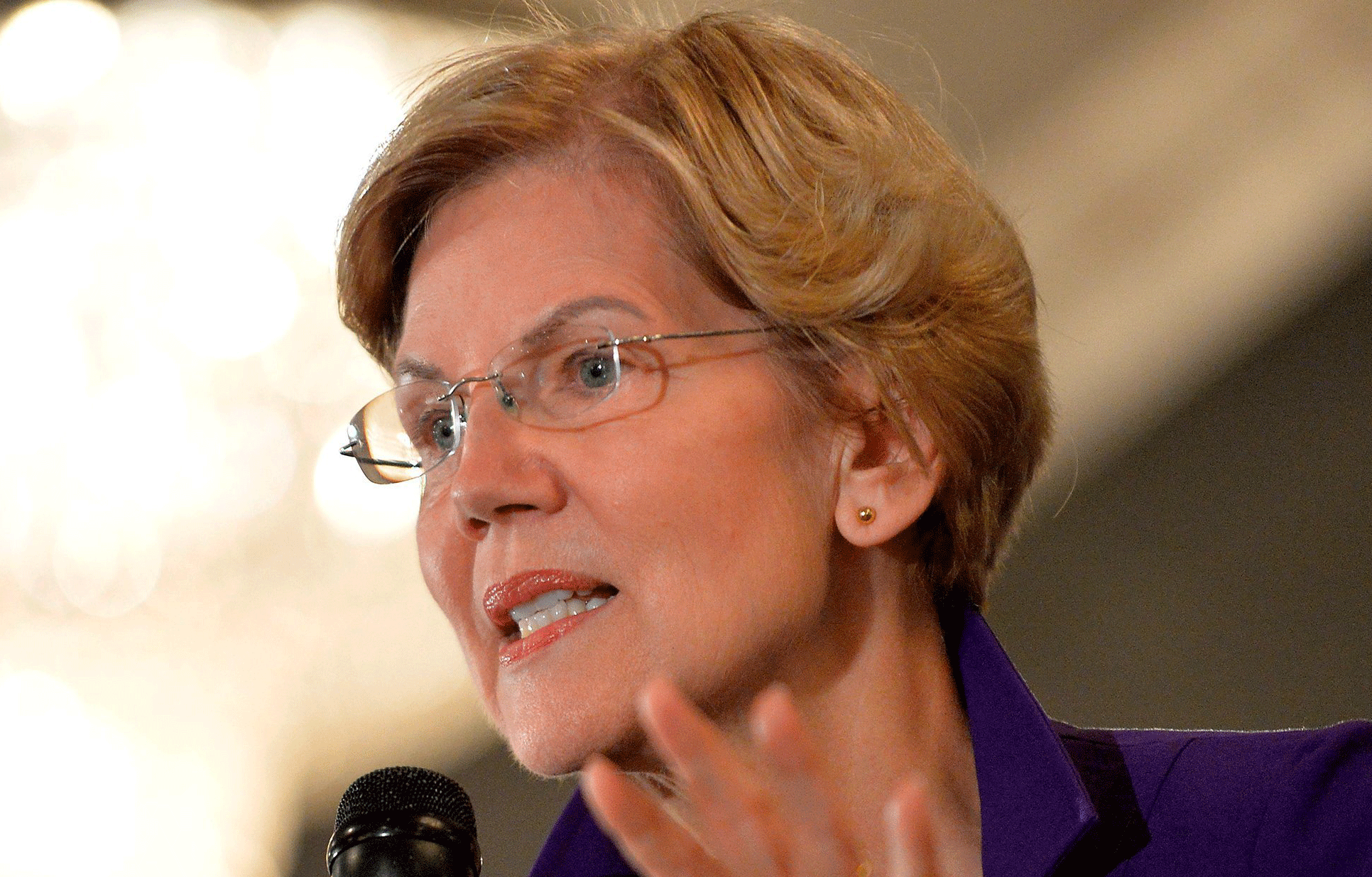
Sen. Elizabeth Warren has promised that “Medicare for All” will not cost the middle class one penny more in taxes.
That vow, however, is possible largely because the Massachusetts Democrat and 2020 presidential candidate asserts that creating a single-payer health insurance system will cost a whole lot less than many others think it will. That includes her fellow 2020 contender Vermont Sen. Bernie Sanders, who wrote the bill.
Warren’s financing estimate relies on being able to greatly curb health care spending — more than is reasonably possible, some experts say.
Warren’s campaign unveiled a financing plan earlier this month that pegged the cost of Medicare for All at $20.5 trillion over a decade, significantly lower than the $30-plus trillion estimates calculated by several think tanks and academics. While Sanders has not released a detailed financing plan or price tag, he has acknowledged it will likely cost north of $30 trillion.
Warren gets to the lower figure in two ways: She requires states and local governments to redirect the $6 trillion they now spend on health care to the federal government to help foot the bill. But her plan also depends heavily on cutting administrative expenses, prescription drug prices and reimbursements to hospitals and doctors, as well as slowing the overall growth rate of health care spending.
Some policy experts question whether all those costs could actually be wrung out of the nation’s health care system. It matters because if it doesn’t happen, then Warren would need to raise even more money in taxes — possibly having to turn to the middle class.
“The shortfall would be in the trillions of dollars if those assumptions perform the way most people think they’ll perform,” said Jim Kessler, executive vice president for policy at Third Way, a center-left think tank.
To finance Medicare for All, Warren calls for increasing taxes on the wealthy, Wall Street and big corporations, as well as requiring employers to contribute. Some experts also doubt whether these levies would raise the amounts she projects.
Warren worked with two prominent experts to develop the $20.5 trillion cost estimate. They reviewed seven previous single-payer cost analyses, but also incorporated other studies and the experiences in other developed countries.
“I stand by the estimates that we came up with. They were in no cases extreme,” said Don Berwick, administrator of the Centers for Medicare and Medicaid Services in the Obama administration. “They were estimates based on the evidence we had.”
The Warren campaign pointed to the 24-page analysis by “leading experts” such as Berwick that backs up the policy choices the senator made beyond the Medicare for All Act.
“Every policy choice is validated by robust empirical research, supported by experts, and grounded in real data,” said spokeswoman Saloni Sharma. “People who disagree with the numbers should show us theirs.”
Here are four big spending assumptions contained in Warren’s plan:
Slashing administrative costs: The US shells out far more than other countries in this area, in part because it has multiple payers, including private insurers, Medicare and Medicaid. Private insurers spend 12.2% of premiums collected on administrative costs, while Medicare spends 2.3%, according to federal data.
Warren would set Medicare for All administrative spending at 2.3%, which would save $1.8 trillion over a decade, according to the analysis by Berwick and Simon Johnson, former chief economist of the International Monetary Fund.
That spending rate is too low for experts at the Urban Institute, who recently published an analysis of a Medicare for All-type plan that pegged the cost at $34 trillion over a decade. They consider 6% to be more reasonable because, as the sole payer, the federal government will have to invest in managing care, monitoring quality and access and preventing fraud and abuse.
“Medicare doesn’t do a lot to monitor utilization and to try to control spending,” said John Holahan, an institute fellow at Urban Institute and one of the analysis’ authors. “In a system like [Medicare for All], where everything is free, I think you are going to have to do a lot more of that.”
Reforming prescription drug pricing: Warren has outlined some aggressive cost reduction targets — seeking to bring down Medicare prices for brand-name drugs by 70% and for generic medications by 30% from current levels. She would do this mainly by allowing the federal government to negotiate drug prices and by overriding patents or providing public support to manufacture the drugs if bargaining fails.
The senator’s plan bears some similarities to the prescription drug price bill making its way through the House and backed by Speaker Nancy Pelosi. But it would set a lower price than the House bill and eliminate the limit on the number of drugs subject to negotiation every year, among other changes.
The Urban analysis had estimated a roughly 30% reduction in prescription drug prices, which it thought had a better shot of getting through Congress and the influential pharmaceutical lobbyists. As it is, the House bill has divided progressive and moderate Democrats, which has delayed bringing it to the floor for a vote. It’s considered dead on arrival in the GOP-controlled Senate.
Overall, Warren’s prescription drug reform plan would save $1.7 trillion over a decade, according to the analysis done for her campaign.
Reducing payments to hospitals and doctors: Warren proposes drastically cutting reimbursement rates for many providers.
She would pay hospitals an average of 110% of Medicare rates, which she said would cover their current cost of caring for patients. She argues that hospitals will still come out ahead because their administrative and drug expenses would be lower and because everyone would have insurance — meaning fewer non-paying consumers.
Doctors, meanwhile, would be paid at current Medicare rates, though Warren would increase reimbursements for primary care doctors and lower them for certain specialists, whom she called “overpaid.” Physicians would also benefit since they would spend less time on billing and dealing with insurance companies, she said.
These rates would be a big haircut from those paid by private insurers, though it would be a bump up from Medicaid reimbursement. So just how it affects providers would depend on their mix of private, Medicare and Medicaid patients. This, along with other payment reforms, would save $2.9 trillion over a decade.
Still, the powerful hospital and physician groups would fight such a change in reimbursements. For instance, when devising a state-run public insurance option earlier this year, Washington lawmakers wound up capping payments at an average of 160% of Medicare rates, instead of just Medicare rates, after an outcry from the industry. That reduced projected premium savings to only 5% to 10%, instead of 40%.
“These [Medicare] rates are simply so punishing to doctors, nurses and hospital employees compared to private insurance that there will be revolt among the medical profession,” Kessler said. “So there will either be an expensive rollback or demonstrations in the street.”
Slowing health care spending growth: Overall, Warren’s proposal would lower the rate of health care spending growth in the US so that it falls in line with overall economic growth, according to the analysis done for the campaign. This would save $1.1 trillion over a decade.
That will be possible in part because currently about one-third of the spending — roughly $1 trillion — is low value, Berwick said. That gives the US a lot of opportunity to eliminate these wasteful expenditures under Medicare for All.
But other experts doubt that will be possible.
“To get down to GDP growth is not something we’ve ever done in this country,” Holahan said.






